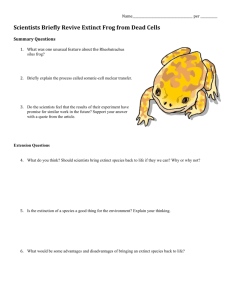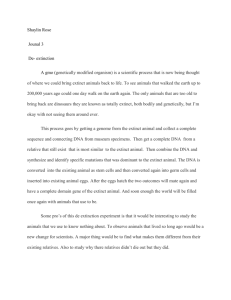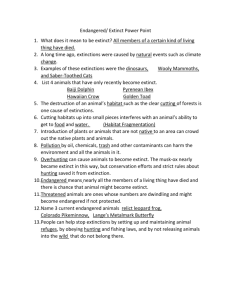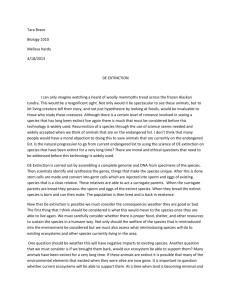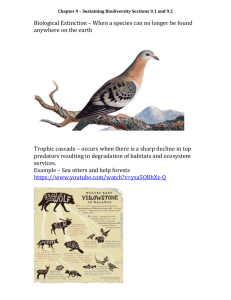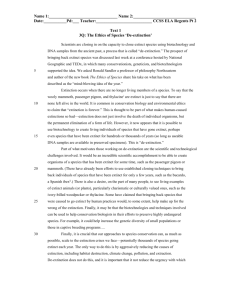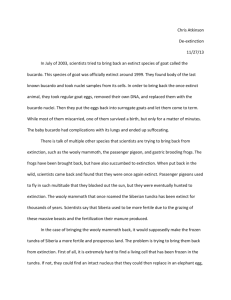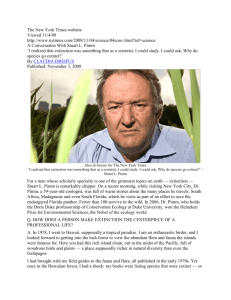Persuasive Speech - Writing Workshop blog
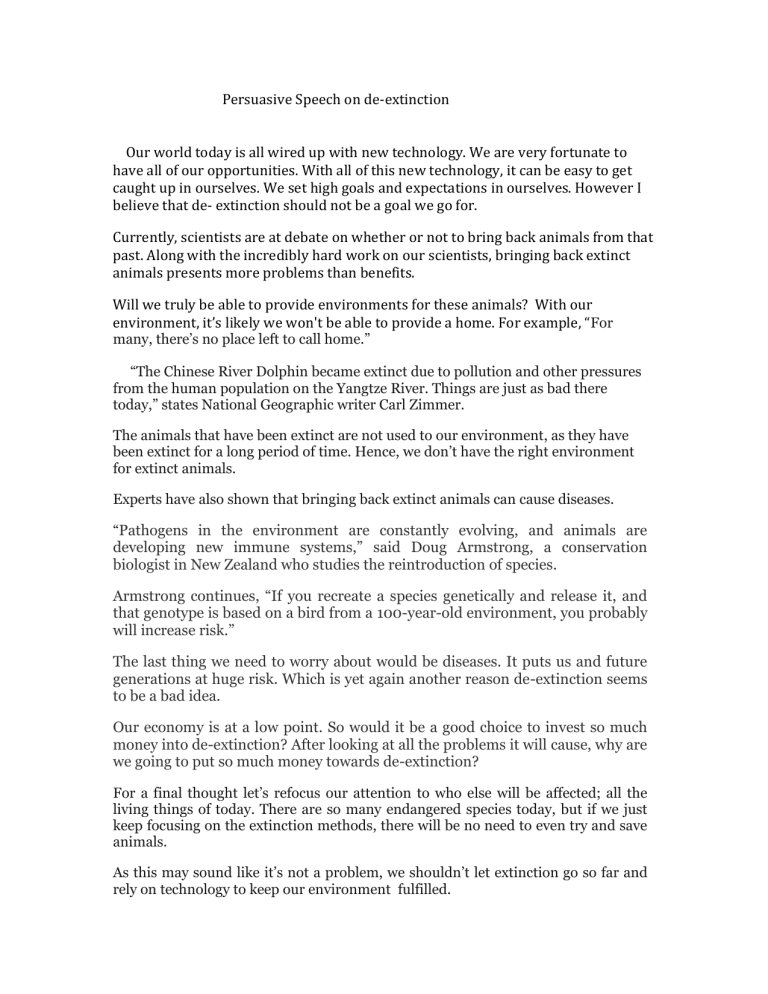
Persuasive Speech on de-extinction
Our world today is all wired up with new technology. We are very fortunate to have all of our opportunities. With all of this new technology, it can be easy to get caught up in ourselves. We set high goals and expectations in ourselves. However I believe that de- extinction should not be a goal we go for.
Currently, scientists are at debate on whether or not to bring back animals from that past. Along with the incredibly hard work on our scientists, bringing back extinct animals presents more problems than benefits.
Will we truly be able to provide environments for these animals? With our environment, it’s likely we won't be able to provide a home. For example, “ For many, there’s no place left to call home.”
“The Chinese River Dolphin became extinct due to pollution and other pressures from the human population on the Yangtze River. Things are just as bad there today,” states National Geographic writer Carl Zimmer.
The animals that have been extinct are not used to our environment, as they have been extinct for a long period of time. Hence, we don’t have the right environment for extinct animals.
Experts have also shown that bringing back extinct animals can cause diseases.
“ Pathogens in the environment are constantly evolving, and animals are developing new immune systems,” said Doug Armstrong, a conservation biologist in New Zealand who studies the reintroduction of species.
Armstrong continues, “If you recreate a species genetically and release it, and that genotype is based on a bird from a 100-year-old environment, you probably will increase risk.”
The last thing we need to worry about would be diseases. It puts us and future generations at huge risk. Which is yet again another reason de-extinction seems to be a bad idea.
Our economy is at a low point. So would it be a good choice to invest so much money into de-extinction? After looking at all the problems it will cause, why are we going to put so much money towards de-extinction?
For a final thought let’s refocus our attention to who else will be affected; all the living things of today. There are so many endangered species today, but if we just keep focusing on the extinction methods, there will be no need to even try and save animals.
As this may sound like it’s not a problem, we shouldn’t let extinction go so far and rely on technology to keep our environment fulfilled.
“ There is nothing involving the real-world realities of habitat destruction of the inherent conflict between growing human populations and wildlife survival.
Why worry about endangered species? We can simply keep their DNA and put them back in the wild later,” remarks Stuart Primm who is the Doris Duke Chair of Conservation Ecology at Duke University, and the 2006 laureate of the Dr. A.
H. Heineken Prize for Environmental Sciences awarded by the Royal
Netherlands Academy of Arts and Sciences.
To conclude, we must take into account all the variables that can go wrong with de- extinction, and that’s why it’s just not a great idea. Thank you for your time.
work cited page
Rich, Nathaniel. "The Mammoth Cometh." The New York Times. The New York
Times, 01 Mar. 2014. Web. 24 Mar. 2015
Carl Zimmer. "The New Age of Exploration." Bringing Extinct Species Back to
Life. National Geographic, n.d. Web. 20 Mar. 2015.
By Stuart Pimm, for National Geographic News PUBLISHED March 12, 2013.
"Opinion: The Case Against Species Revival." National Geographic. National
Geographic Society, n.d. Web. 04 Apr. 2015.
